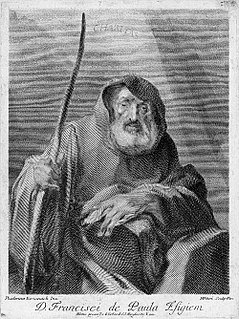Kapellmeister is a German word designating a person in charge of music-making. The word is a compound, consisting of the roots Kapelle and Meister ("master"). The word was originally used to refer to somebody in charge of music in a chapel. However, the term has evolved considerably in its meaning in response to changes in the musical profession.

Johann Michael Haydn was an Austrian composer of the Classical period, the younger brother of Franz Joseph Haydn.
An urtext edition of a work of classical music is a printed version intended to reproduce the original intention of the composer as exactly as possible, without any added or changed material. Other kinds of editions distinct from urtext are facsimile and interpretive editions, discussed below.

Rohrau is a village in the state of Lower Austria. The name comes from two German words: Rohr' 'reed' and Au 'riparian forest'. South of the village is a riparian forest and a swamp covered with reed.
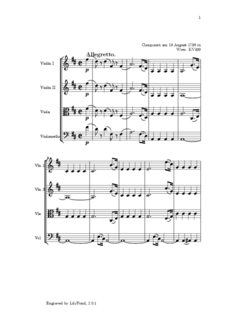
The String Quartet in D major, K. 499, was written in 1786 in Vienna by Wolfgang Amadeus Mozart. It was published by – if not indeed written for – his friend Franz Anton Hoffmeister. Because of this, the quartet has acquired the nickname Hoffmeister. Hoffmeister had started issuing a series of chamber-music publications in 1785, including Mozart's K. 499 as well as Joseph Haydn's Op. 42.

Johann Adam Joseph Karl Georg Reutter, during his life known as Georg Reutter the Younger was an Austrian composer. According to Jones, in his prime he was "the single most influential musician in Vienna".

G minor is a minor scale based on G, consisting of the pitches G, A, B♭, C, D, E♭, and F. Its key signature has two flats. Its relative major is B-flat major and its parallel major is G major.
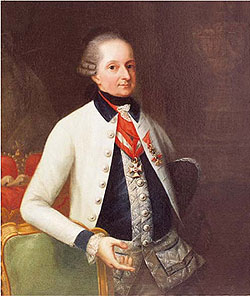
Nikolaus I, Prince Esterházy was a Hungarian prince, a member of the famous Esterházy family. His building of palaces, extravagant clothing, and taste for opera and other grand musical productions led to his being given the title "the Magnificent". He is remembered as the principal employer of the composer Joseph Haydn.

G. Henle Publishers is a German publishing house that specializes in urtext editions of sheet music. The programme includes works by composers from all different periods, in particular composers from the baroque to the early twentieth century whose works are no longer under copyright. In addition to its sheet music, G. Henle Publishers also produces scholarly complete editions, books, reference works and periodicals.The publishing house also offers its Urtext editions in digital form, available in an app for tablets.
Maria Anna Sabina (von) Genzinger, called "Marianne", was a Viennese amateur musician, the mother of six children, and a friend of the composer Joseph Haydn. Her correspondence with Haydn preserves a personal view of the composer not available from any other biographical source.
The ethnicity of the composer Joseph Haydn was a controversial matter in Haydn scholarship during a period lasting from the late 19th to the mid 20th century. The principal contending ethnicities were Croatian and German. Mainstream musical scholarship today adopts the second of these two hypotheses.
Mathias Haydn was the father of two famous composers, Joseph and Michael Haydn. He worked as a wheelwright in the Austrian village of Rohrau, where he also served as Marktrichter, an office akin to village mayor.
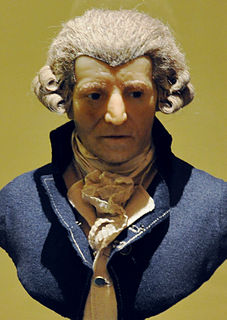
The celebrated composer Joseph Haydn died in Vienna, aged 77, on May 31, 1809, after a long illness. As Austria was at war and Vienna occupied by Napoleon's troops, a rather simple funeral was held in Gumpendorf, the parish in Vienna to which Haydn's house on the Windmühle belonged, followed by burial in the Hundsturm cemetery. Following the burial, two men contrived to bribe the gravedigger and thereby sever and steal the dead composer's head. These were Joseph Carl Rosenbaum, a former secretary of the Esterházy family, and Johann Nepomuk Peter, governor of the provincial prison of Lower Austria. Rosenbaum was well known to Haydn, who during his lifetime had intervened with the Esterházys in an attempt to make possible Rosenbaum's marriage to the soprano Therese Gassmann.
The Symphony No. 37 in C major, Hob. I/37, is a symphony by Franz Joseph Haydn. The numbering is completely misleading, as it is clearly one of Haydn's earliest symphonies. A copy of the score found at Český Krumlov, Czech Republic, is dated 1758. It can be presumed it was written for the orchestra of Count Morzin, in which Haydn was employed until February 1761.
Georg Reutter was an Austrian organist, theorbo player and composer.

The six string quartets opus 20 by Joseph Haydn are among the works that earned Haydn the sobriquet "the father of the string quartet". The quartets are considered a milestone in the history of composition; in them, Haydn develops compositional techniques that were to define the medium for the next 200 years.
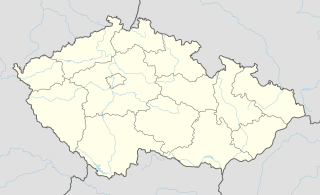
Dolní Lukavice is a village and municipality (obec) in Plzeň-South District in the Plzeň Region of the Czech Republic.

The Missa brevis in F major, Hob. XXII:1, is a mass by Joseph Haydn. According to Dack it is Haydn's "earliest authenticated work." It also represents some of the last of his compositional activity, as in his old age he spent some time attempting to revise it.


